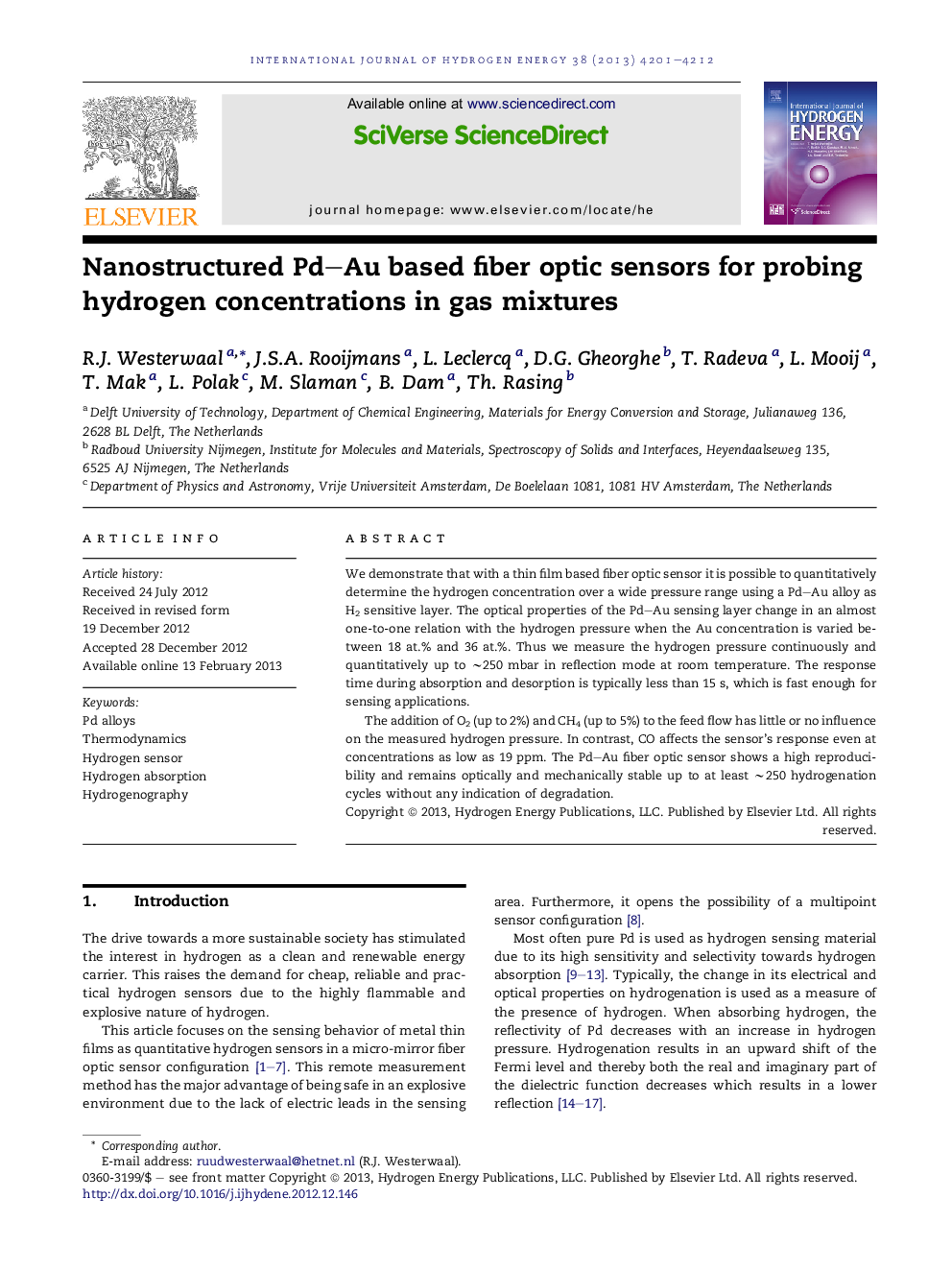| Article ID | Journal | Published Year | Pages | File Type |
|---|---|---|---|---|
| 1281885 | International Journal of Hydrogen Energy | 2013 | 12 Pages |
We demonstrate that with a thin film based fiber optic sensor it is possible to quantitatively determine the hydrogen concentration over a wide pressure range using a Pd–Au alloy as H2 sensitive layer. The optical properties of the Pd–Au sensing layer change in an almost one-to-one relation with the hydrogen pressure when the Au concentration is varied between 18 at.% and 36 at.%. Thus we measure the hydrogen pressure continuously and quantitatively up to ∼250 mbar in reflection mode at room temperature. The response time during absorption and desorption is typically less than 15 s, which is fast enough for sensing applications.The addition of O2 (up to 2%) and CH4 (up to 5%) to the feed flow has little or no influence on the measured hydrogen pressure. In contrast, CO affects the sensor's response even at concentrations as low as 19 ppm. The Pd–Au fiber optic sensor shows a high reproducibility and remains optically and mechanically stable up to at least ∼250 hydrogenation cycles without any indication of degradation.
► A Pd–Au thin film fiber optic sensor which is able to quantitatively probe the H2 concentration. ► Fast response time of less than 15 s during hydrogen absorption and desorption. ► The addition of O2 (up to 2%) and CH4 (up to 5%) to the H2 feed flow has little or no influence on the optical response. ► The Pd–Au fiber optic sensor shows a high reproducibility up to at least ∼250 hydrogenation cycles.
